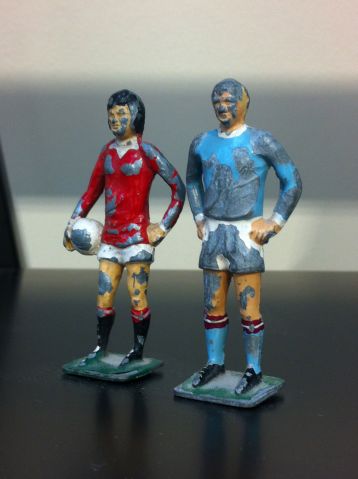The huge task of finding that elusive piece of art work (see last post) meant having to confront the sheer volume of what I own. Raking through each box with a fine tooth comb, cataloguing virtually every item in each one, meant having to face up to just how much I’ve collected over the years. I thought a lot about the value and worth of the assorted objects as I sifted through them.
There’s no doubt that some objects are ‘worth’ more than others, both in emotional and in monetary terms. A lot of them are also real indicators of their time, both culturally and politically, especially the magazines and books, saved from my teenage years. I’m looking forward to finding time in the future to look more closely at the various Diana and Jackie annuals – Photo Loves, Blue Jeans and various others. But for now, in terms of timing, it feels appropriate that my ‘Here Today‘ work is currently being shown as part of a group show called ‘For What It’s Worth.‘
The exhibition is in the South Square Gallery in Thornton, Bradford. I’m really pleased to be offered the opportunity to show work here and pleased that this particular piece was selected and has had a dusting down. Not only is it relevant to the show’s premise – an exploration into how artwork is priced and valued – it also happens to be one of my favourite pieces.
The process of gathering together the assembled pieces and preparing them for being on show again, followed by releasing them into the hands of the curator, reminded me how precious certain individual items are to me. It’s reminded me also that out of the dozens of items I’ve sorted through these past few days, some stand out as truly special. The hand mirror, the used make-up palettes, the vintage silk flower, which ‘Here Today’ is made up of, are classic examples of objects like this – they demonstrate perfectly for me the incredible power of objects, how deeply attached we can become to them and the extremely powerful emotions they can evoke.
‘Here Today’ is composed of objects that belonged to and were actually handled by my late Nana; she left her mark on them, and while they are still here, my Nana no longer is. This small assemblage of objects conjures up for me something that I write a lot about here, a theme that is at the core of my practice – a fascination with the contrast between the permanence of objects and the fragility of life.
I wrote this in response to the curator’s question about how I price my own artwork:
‘When it comes to putting a monetary value on a piece of art that is so deeply personal to me, it’s far from easy. Perhaps that’s why, when I’m asked to put a price on something like ‘Here Today‘, I often find myself taking the easy way out and responding with nfs (not for sale). Or, I suppose you could put it another way – that the assembled items in this particular piece, to me – are priceless.’
I’m looking forward to travelling to the South Square Gallery on Friday, to be at an event organised around the exhibition – to meeting Jean McEwan, a fellow blogger on this site, and the other artists in the show – to seeing their work, and hopefully speaking with them about how they approach the task of pricing it.
If you happen to be in the Bradford area, it would be lovely to see you there. Details are on the South Square Gallery website:
http://www.southsquarecentre.co.uk/index.php?/gallery/current/


